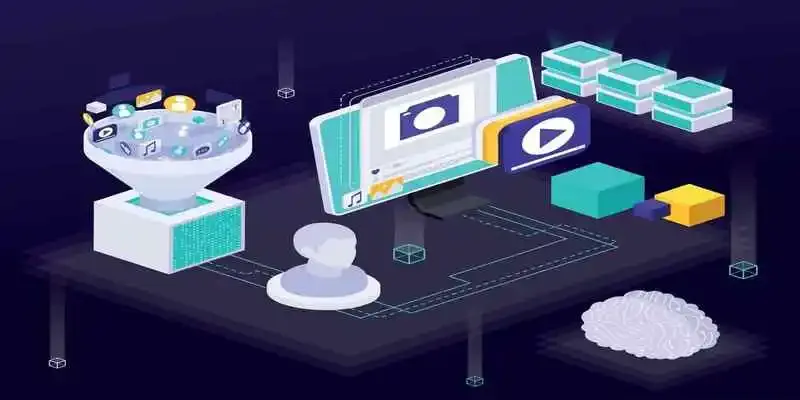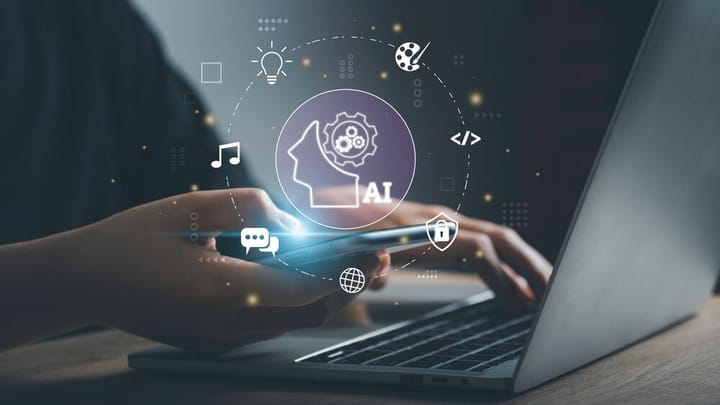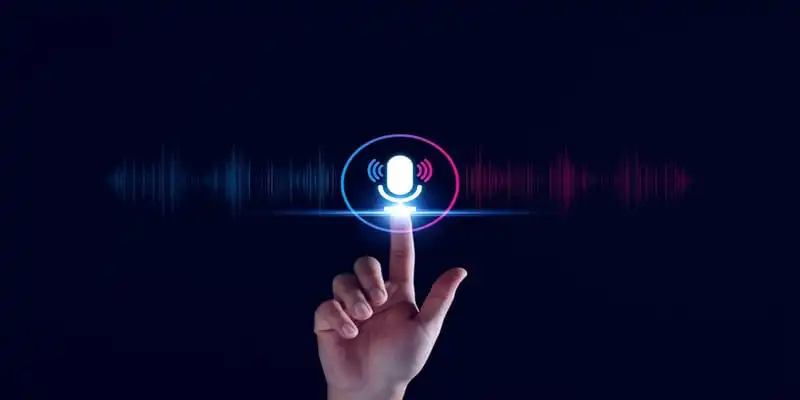OpenAI's Sora Text-To-Video Generator: Everything You Need to Know
OpenAI's Sora text-to-video generator is an innovative AI model that transforms text into captivating videos and generates scenes with multiple characters. It creates realistic narratives while maintaining visual quality. Sora is an excellent AI model for future developments in content creation.

In computer science, creating videos from textual input is a major computational task. However, recent developments in the field of text-to-video artificial intelligence (AI) have demonstrated significant gains. Progress in data-driven physics simulations and realistic video creation is expected to improve the area further. Text-to-video artificial intelligence (AI) has the potential to revolutionize a wide range of creative fields, including advertising, graphic design, gaming, filmmaking, and educational technologies.
In February of this year, OpenAI debuted Sora, a brand-new artificial intelligence (AI) model for creating videos in almost any style by using text suggestions. The artificial intelligence research company shared a series of videos generated by Sora with textual prompts, and the results are stunning. Even though several previous text-to-video models have been developed, industry experts have praised its videos' quality. They also stated that the launch of this model might mark a significant advancement in artificial intelligence and text-to-video creation. Let's break our discussion into smaller parts to better grasp what is Sora, how it works, case studies, pros, cons, and alternatives.
What is Sora?
The generative text-to-video AI model Sora was created by OpenAI, the same company that created DALL·E 3 and ChatGPT. According to OpenAI, it "can create realistic and imaginative scenes." The videos it creates from textual prompts seem fantastic, but we can argue that the term "realistic" could oversell things a bit. They also don't have sound, at least not now.
Sora has the ability to convert images into videos and to move video clips forward or backward in time, in addition to text instructions. It can generate videos with many characters, camera movements, and realistic and consistent details that last up to 60 seconds. Owing to its training, it possesses a profound comprehension of the actual world. However, it does not necessarily correspond with how objects interact physically.
How Does Sora Work?
Sora is a diffusion model, just like text-to-image generative AI models like DALL·E 3, StableDiffusion, and Midjourney. This implies that machine learning is used to progressively change the pictures into something that resembles the prompt's description from the beginning when each frame of the video is composed entirely of static noise. Users can create videos upto 60 seconds with Sora AI generative model.
Resolving Temporal Consistency
Sora is innovative in evaluating many video frames simultaneously. It addresses the issue of maintaining object consistency as objects come and go from view. In the sample video shared by the OpenAI team, you'll note that the kangaroo's hand repeatedly leaves the frame and then returns with the same appearance.
Combining Diffusion and Transformer Models
Sora employs a transformer architecture with a diffusion model, similar to GPT's.
Jack Qiao observed that "diffusion models are great at generating low-level texture but poor at global composition, while transformers have the opposite problem" when combining these two model types. In other words, you need a diffusion model to produce the details and a GPT-like transformer model to decide on the high-level arrangement of the video frames.
OpenAI gives a high-level explanation of how this combination functions in a technical report on the deployment of Sora. Diffusion models divide pictures into more manageable rectangular "patches." These patches are three-dimensional for video because they last throughout time. Patches can be compared to "tokens" in big language models. Instead of being a part of a phrase, they are part of a collection of pictures. The model's diffusion component creates the content for each patch, while the transformer component arranges the patches.
Constructing patches employs a dimensionality reduction phase to make video production computationally practical. It means that processing does not need to occur on every pixel for every frame.
Boosting Video Reliability with Captioning
In DALL·E 3, Sora employs a recaptioning approach to accurately capture the user's query's real meaning. That is, the user prompt is rewritten using GPT to include further information before any video is generated. It is basically a type of automatic prompt engineering.
Potential Use Cases for Sora
Users will find tremendous usage for OpenAI's Sora AI model in both video creation and editing chores. An artificial intelligence tool called the Sora model will assist you in finishing duties linked to videos, both for work and play. Let's explore OpenAI's Sora's possible applications in more detail.
1. Editing
These days, social networking sites and one-minute short videos are highly popular. We regularly come across video editing tasks in both our personal and professional lives. You must invest hours and become proficient with editing applications to finish video editing chores. Even for a quick one-minute video, you could occasionally need to put in a week's worth of labor to add the perfect sound effects and frames at the perfect moment. Fortunately, you can reduce your effort and simplify your life by automating simple to intermediate editing activities with OpenAI's Sora model.
2. Video Creation
Create a draft video using OpenAI's Sora model if you have idea video designs and are unsure about how they will seem in the finished version. The footage can serve as a rough draft of your conceptual design video, giving you the foundation for your final work. You must write a thorough and precise prompt if you want OpenAI's Sora model to produce your desired video.
3. Video Extension
The Sora model from OpenAI is a useful tool for expanding and analyzing already-existing videos. There are two fundamental ways to make any video longer. The first technique involves slowing down the movie to add extra seconds, while the second involves looping particular segments of the video. But by using OpenAI's Sora model, you can finish your extended chores more artistically by including them into your film and creating fresh, original content for it.
15 Best OpenAI Sora AI Video Examples
Here are the best examples of videos generated with Sora shared by OpenAI. Check the prompts and then watch the video to enjoy the visuals created by OpenAI's Sora model.
Example 1: Kangaroo dance
Prompt: A cartoon kangaroo disco dances.
Example 2: Puppies playing in the snow
Prompt: A litter of golden retriever puppies playing in the snow. Their heads pop out of the snow.
Example 3: Borneo wildlife
Promt: Borneo wildlife on the Kinabatangan river.
Example 4: Bamboo forest
Prompt: A petri dish with bamboo forest growing within it that has tiny red pandas running around.
Example 5: Big sur
Prompt: Drone view of waves crashing against the rugged cliffs along Big Sur’s garay point beach. The crashing blue waters create white-tipped waves, while the golden light of the setting sun illuminates the rocky shore. A small island with a lighthouse sits in the distance, and green shrubbery covers the cliff’s edge. The steep drop from the road down to the beach is a dramatic feat, with the cliff’s edges jutting out over the sea. This is a view that captures the raw beauty of the coast and the rugged landscape of the Pacific Coast Highway.
Example 6: Mitten astronaut
Prompt: A movie trailer featuring the adventures of the 30 year old space man wearing a red wool knitted motorcycle helmet, blue sky, salt desert, cinematic style, shot on 35mm film, vivid colors.
Example 7: Ships in coffee
Prompt: Photorealistic closeup video of two pirate ships battling each other as they sail inside a cup of coffee.
Example 8: Snowy Tokyo City
Prompt: Beautiful, snowy Tokyo city is bustling. The camera moves through the bustling city street, following several people enjoying the beautiful snowy weather and shopping at nearby stalls.Gorgeous sakura petals are flying through the wind along with snowflakes.
Example 9: Robot life
Prompt: The story of a robot's life in a cyberpunk setting.
Example 10: Monster with melting candle
Prompt: Animated scene features a close-up of a short fluffy monster kneeling beside a melting red candle. The art style is 3D and realistic, with a focus on lighting and texture. The mood of the painting is one of wonder and curiosity, as the monster gazes at the flame with wide eyes and open mouth. Its pose and expression convey a sense of innocence and playfulness, as if it is exploring the world around it for the first time. The use of warm colors and dramatic lighting further enhances the cozy atmosphere of the image.
Example 11: Suv in the dust
Prompt: The camera follows behind a white vintage SUV with a black roof rack as it speeds up a steep dirt road surrounded by pine trees on a steep mountain slope, dust kicks up from it’s tires, the sunlight shines on the SUV as it speeds along the dirt road, casting a warm glow over the scene. The dirt road curves gently into the distance, with no other cars or vehicles in sight. The trees on either side of the road are redwoods, with patches of greenery scattered throughout. The car is seen from the rear following the curve with ease, making it seem as if it is on a rugged drive through the rugged terrain. The dirt road itself is surrounded by steep hills and mountains, with a clear blue sky above with wispy clouds.
Example 12: Origami undersea
Prompt: A gorgeously rendered papercraft world of a coral reef, rife with colorful fish and sea creatures.
Example 13: Cat on bed
Prompt: A cat waking up its sleeping owner demanding breakfast. The owner tries to ignore the cat, but the cat tries new tactics and finally the owner pulls out a secret stash of treats from under the pillow to hold the cat off a little longer.
Example 14: Wooly mammoth
Prompt: Several giant wooly mammoths approach treading through a snowy meadow, their long wooly fur lightly blows in the wind as they walk, snow covered trees and dramatic snow capped mountains in the distance, mid afternoon light with wispy clouds and a sun high in the distance creates a warm glow, the low camera view is stunning capturing the large furry mammal with beautiful photography, depth of field.
Example 15: Homemade video
Prompt: A beautiful homemade videoshowing the people of Lagos, Nigeria in the year of 2056.Shot with a mobile phone camera.
Now check their visuals shared on OpenAI's YouTube channel.
What Are OpenAI Sora's Advantages and Disadvantages?
The benefits and drawbacks of Sora AI are a crucial consideration for all users, as this Open AI Sora review highlights. Let's discuss a few of these:
Pros
1. Cutting-Edge Technology
With Sora, OpenAI continues to lead the AI innovation sector. It produces more captivating and cinematic-quality videos than previous AI video technologies. Sora represents a technical leap forward in this regard.
2. Testing and Access
In the beginning, OpenAI is testing and mitigating potential technological misuse with a small group of early testers (academics and outside researchers). By doing this, professional reviews can be obtained to enhance the Sora AI text to video generator's quality before its public release.
3. Security
To thoroughly evaluate Sora, OpenAI has put in place some safety precautions. It is collaborating with specialists in the domains of prejudice, hate speech, and misinformation. This involves giving each and every AI-generated video a watermark.
4. Tailored Experiences
Consider audience-specific marketing campaigns or instructional videos that are customized for every learner. Personalization like this greatly boosts impact and engagement.
Cons
The text-to-video generator from Sora has several benefits. There are drawbacks to this cutting-edge new technology, though. A few of the negative aspects include:
1. Moral Considerations
Sora is a formidable AI tool that can transform the content production industry and open up new career possibilities. But it also brings up several ethical issues that require consideration. Like any new technology, there is a chance that it may be misused which might raise major moral dilemmas.
2. Loss of Employment
While Sora can revolutionize content production, it also has the potential to transform jobs and workflows across a range of sectors. Experts in fields like content development, graphic design, and video production might face job displacement as firms prefer to replace human labor in these and other areas.
3. Excessive Dependence on Technology
Over-reliance on AI may hinder people's ability to think critically and creatively. It's critical to strike a balance between AI support and human input.
Frequently Asked Questions
Q1: When will Sora be made available?
A release date for Sora has not been disclosed by OpenAI. The corporation has stated that it intends to release it, but not soon.
Q2: Will I have to pay for Sora?
There have been no details on how Sora will be launched or whether it requires any subscription. On the other hand, we may anticipate that OpenAI will charge customers for Sora in the same manner as their ChatGPT-4 and DALL-E services
Q3: Are there any other systems like Sora?
Several high-profile alternatives to Sora allow users to create video content from text. These include:
- Runway-Gen-3: Runway Gen-3 is the most well-known OpenAI Sora substitute. Similar to Sora, this generative AI converts text to video and is presently accessible on smartphones and the web.
- Lumiere: Lumiere is a recently announced product by Google. It is offered as an extension to the PyTorch deep-learning Python framework plugin.
- Make-a-video: In 2022, Meta released Make-a-Video, which is also accessible through a PyTorch extension.
Additionally, there are a few smaller rivals:
- Pictory: Pictory’s video creation tools are aimed at educators and content marketers. It makes it easier for them to transform text into videos.
- Kapwing: Kapwing is another online platform that facilitates the creation of videos from text. Its focus is on user-friendliness for casual artists and social media marketers.
- Synthesia: Synthesia specializes in turning text into AI-powered video presentations. It provides individualized avatar-led videos for both corporate and educational usage.
- HeyGen: HeyGen simplifies the process of creating videos for sales outreach, education, and product and content marketing.
- Steve AI: Steve AI's AI platform makes it possible to generate videos and animation from prompts. You can also go for script to video and audio to video options.
- Elai: Elai specializes in corporate training and e-learning. It provides a way to easily transform educational content into instructional videos.
Wrapping Note
The launch of OpenAI's Sora marks a watershed event in the field of generative AI, particularly text-to-video technology. With just a few written suggestions, Sora can produce intricate and visually spectacular sequences, raising the bar for video creation. This creative model is not only excellent at creating videos of excellent quality, but it also shows a great comprehension of characters' facial expressions and body language.
OpenAI prioritizes safety and ethical concerns. Hence, Sora goes through more testing and improvement to ensure that the technology is utilized properly. The general public does not yet have access to it, but there is a tangible excitement about its release. Sora is an interesting topic to follow in the upcoming months due to its potential uses in creative sectors. As we anticipate its official release, Sora serves as a reminder of artificial intelligence's explosive growth and transformative power.


